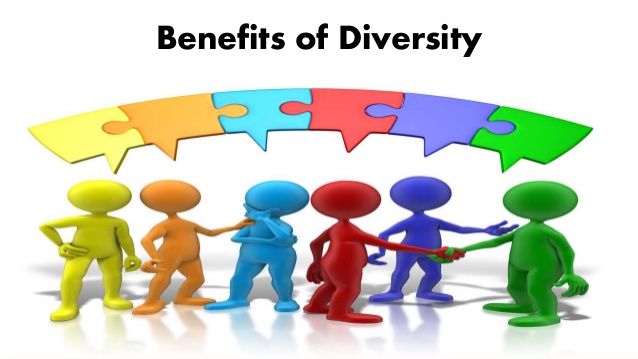Benefits of a Diverse Workforce
A diverse workforce refers to a group of employees with varying characteristics, backgrounds, and perspectives. Embracing diversity in the workplace has become increasingly important for organizations worldwide. In this article, we will explore the numerous benefits that a diverse workforce can bring to companies and their employees.
Enhanced Creativity and Innovation
Diversity fuels creativity and innovation within organizations. When individuals with different experiences and perspectives come together, they bring a wide range of ideas and solutions to the table. This diversity of thought can lead to breakthrough innovations and unique problem-solving approaches that may not have been possible in a homogenous environment.
Improved Decision-Making
A diverse workforce can significantly enhance decision-making processes. When a team consists of individuals from various backgrounds, they bring different viewpoints, knowledge, and expertise. This diversity of perspectives enables more comprehensive discussions, thorough analysis of options, and ultimately, better decision-making.
Increased Adaptability
In today’s rapidly changing business landscape, adaptability is crucial for success. A diverse workforce is more likely to adapt quickly to new situations and challenges. Employees from different backgrounds often possess a broader range of skills, experiences, and cultural insights, allowing them to navigate change more effectively.
Broader Market Understanding
A diverse workforce can provide companies with a deeper understanding of their target markets. When employees come from diverse backgrounds, they bring valuable insights into different cultures, languages, and consumer preferences. This knowledge can help organizations tailor their products, services, and marketing strategies to better meet the needs of a diverse customer base.
Enhanced Employee Engagement and Satisfaction
Employees who feel valued and included are more likely to be engaged and satisfied in their roles. A diverse workforce fosters an inclusive environment where individuals feel respected and appreciated for their unique contributions. This sense of belonging can lead to higher employee morale, increased productivity, and reduced turnover rates.
Improved Problem Solving
A diverse workforce brings together individuals with different problem-solving approaches. This diversity can lead to more effective and creative solutions when faced with complex challenges. Diverse teams are more likely to consider a wider range of perspectives and alternative solutions, resulting in more robust problem-solving outcomes.
Enhanced Company Reputation
Organizations that prioritize diversity and inclusion often enjoy an enhanced reputation. By fostering a diverse workforce, companies demonstrate their commitment to equal opportunities and fairness. This positive reputation can attract top talent, improve customer loyalty, and positively impact the company’s bottom line.

A diverse workforce offers numerous benefits to organizations, including enhanced creativity, improved decision-making, increased adaptability, broader market understanding, enhanced employee engagement, improved problem-solving, and an enhanced company reputation. Embracing diversity is not only the right thing to do but also a strategic advantage in today’s competitive business landscape.
Frequently Asked Questions
1. Why is having a diverse workforce important?
Having a diverse workforce brings together individuals with different backgrounds, experiences, and perspectives. This diversity fosters innovation, creativity, and problem-solving, leading to better decision-making and improved business performance.
2. What are the advantages of a diverse workforce?
A diverse workforce can enhance employee morale and satisfaction, increase productivity, and attract a wider range of customers. It also helps companies better understand and meet the needs of diverse markets, leading to improved customer satisfaction and loyalty.
3. How does diversity in the workplace promote creativity?
When people from different backgrounds collaborate, they bring unique ideas, insights, and approaches to problem-solving. This diversity of thought sparks creativity and innovation, enabling teams to develop more effective and groundbreaking solutions.
4. What impact does diversity have on employee engagement?
A diverse workforce fosters a sense of belonging and inclusivity, which leads to higher employee engagement. When employees feel valued and respected for their individuality, they are more likely to be motivated, committed, and dedicated to their work.
5. Can diversity in the workplace improve decision-making?
Yes, diversity improves decision-making by reducing the risk of groupthink. When teams consist of individuals with different perspectives and backgrounds, they are more likely to consider a wider range of viewpoints, leading to more thorough and well-rounded decision-making processes.
6. How does diversity support talent acquisition and retention?
A diverse workforce helps attract and retain top talent. Organizations that prioritize diversity and inclusion create a welcoming environment that appeals to a broader pool of candidates. Additionally, diverse employees are more likely to stay with companies that value and respect their unique contributions.
7. What role does diversity play in global business success?
In today’s interconnected world, businesses operate in diverse markets. Having a diverse workforce allows companies to better understand and adapt to different cultures, customs, and preferences, leading to improved success in global business ventures.
8. Can diversity and inclusion initiatives improve the company’s reputation?
Absolutely. Companies that prioritize diversity and inclusion are seen as progressive, socially responsible, and forward-thinking. This positive reputation not only attracts customers but also enhances the company’s brand image and helps build strong relationships with stakeholders.
9. How does diversity contribute to innovation and problem-solving?
Diversity fuels innovation by bringing together individuals with different backgrounds, experiences, and knowledge. This diversity of perspectives allows teams to approach problems from various angles, leading to more creative and effective solutions.
10. What steps can organizations take to foster a diverse workforce?
Organizations can foster a diverse workforce by implementing inclusive hiring practices, promoting diversity in leadership roles, providing diversity training, and creating an inclusive and respectful work environment that values and celebrates differences.




